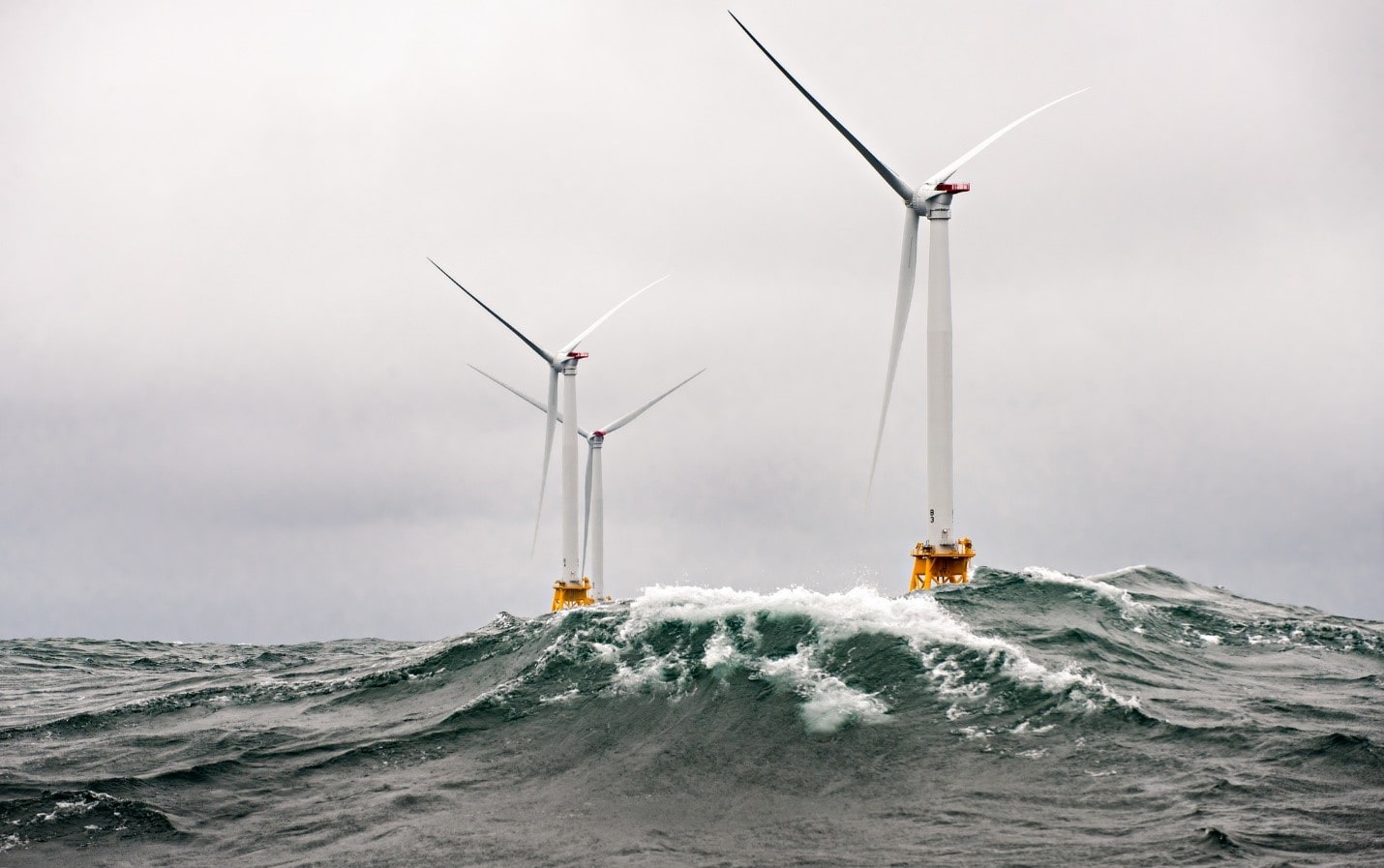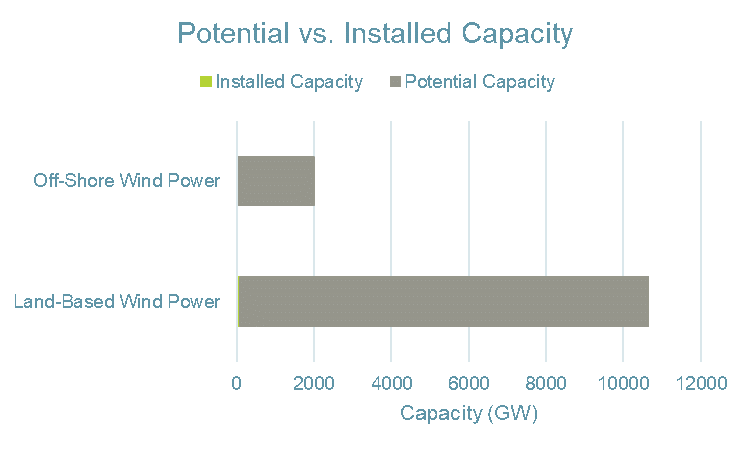

Blog
|
There have been several local and global developments recently with regards to off-shore wind turbines. Advancements in energy storage from both wind and solar energy, coupled with the increased rate of adoption of wind turbines could serve as a major step towards a more renewable-based energy grid and a more sustainable future.

There have been several local and global developments recently with regards to off-shore wind turbines. Advancements in energy storage from both wind and solar energy, coupled with the increased rate of adoption of wind turbines could serve as a major step towards a more renewable-based energy grid and a more sustainable future.

First, let’s explore some recent news surrounding the adoption of off-shore wind turbines. On a global scale, Scotland’s Hywind project recently proved that technology developed for and by the oil drilling industry can be successfully applied to off-shore wind turbines. The floating 30 MW wind farm, made up of five turbines off the Aberdeenshire coast, has been operational since October 2017. During a three-month period of stormy conditions from November 2018 to January 2019, the wind farm managed to continue energy production at 65% of their maximum capacity. Note that during this period, a North Atlantic hurricane produced swells up to 27 feet! Over the course of a year “maximum capacity” is approximately 135 GWh of electricity – or enough to power 20,000 Scottish homes. To ensure that the turbines can withstand weather events on that scale, the floating turbines are ballasted by 5,000 tons of iron ore, and 1,323 tons of chain anchor it to the seafloor. This off-shore farm proves that wind turbines can be successfully deployed in deeper waters where it would be increasingly expensive to extend the physical structure of the turbine tower to the seafloor. Additionally, the US, UK, Ireland, Portugal, Spain, France (PDF), and South Korea all have started to piggyback off the success of the Hywind farm in various ways. For instance, South Korea partnered with the Equinor, the primary backer of Hywind, to conduct a feasibility study for a 200 MW farm that would be located off the coast of Ulsan.
Within the United States, the Department of Energy has committed to spending up to $28M to foster the design of new technologies for light weight, floating, off-shore wind turbines that will utilize controls to maintain stability in stormy conditions, thus eliminating the need for the ballasting utilized by the Hywind design. According to the DOE’s Advanced Research Projects Agency-Energy (ARPA-E) program, the development of these new designs and technologies will enable the US to tap into 60% of its total off-shore wind potential. To put that into perspective, 60% of the total US off-shore wind potential is approximately equivalent to the entire US annual electricity consumption.
While floating off-shore wind technology starts to gain traction and advance on a global and national scale, several states have already begun moving forward with legislature, design, installation and operation of off-shore wind farms. Block Island Wind Farm, the first off-shore wind farm in the US, has been operational since December 2016, and consists of five turbines installed in water approximately 100 feet deep off the coast of Rhode Island. Other states are quickly catching up as well. Maine, Maryland, Massachusetts, New York, New Jersey, Connecticut, and Virginia (PDF) are all moving forward with off-shore wind farms. Construction of a 90 MW, 15-turbine wind farm off the coast of Montauk Point, called the South Fork Wind Farm, is expected to begin construction in 2021 and be online in 2022. The Long Island Power Authority has agreed to purchase power from Deepwater Wind, the company responsible for the wind farm, and when completed, it’s expected to provide enough power for approximately 70,000 homes in East Hampton, NY.
While the production of clean energy is crucial, we must also realize that since we cannot control the weather, energy storage plays an equally critical role as renewable energy production methods continue to develop and adoption continues to increase and spread. With this in mind, Douglas MacFarlane, a chemist at Monash University in Melbourne, Australia, has been researching and developing a fuel cell that can convert renewable electricity into ammonia. Most of us know ammonia as a pungent cleaning product, but it’s also a carbon-free fuel! The primary reason for this research is to help tap into Australia’s renewable energy potential from solar and wind, which is equivalent to 25,000 GW or approximately four times the world’s current electricity production capacity. So, the idea is to convert all that energy potential into a high energy gas that can be compressed and shipped, similar to how natural gas is currently shipped. Then the ammonia can be utilized as a carbon-free fuel source, which originated from completely renewable sources.
With all this new technology being developed for off-shore wind farms and renewable energy storage, where do we stand today? Well, at a global scale, wind energy from both land-based and off-shore wind only accounted for 4% of the total global power generation in 2015, while coal (40%) and natural gas (23%) were the largest sources of global power generation. If we dive further, we see that off-shore wind energy accounts for only one-tenth of all wind-based power or 0.4% of the total global power generation.
Unfortunately, as a country, that outlook isn’t much better. In 2017, the US consumed approximately 97.7 quadrillion Btu of energy and only 2.3% was generated from wind. So that’s not great, but why don’t we look at it from another perspective? If we only look at electric power production, then wind accounts for approximately 3.5%. Again, not great. Compare this with coal, which accounted for 34% and natural gas, which accounted for 26% and things look even more bleak. Maybe the US just isn’t a great candidate for wind. Could that explain why wind energy production is so low? Let’s take a look at total installed wind power capacity as of Q1 2019 compared to the total potential wind capacity. Currently, the US has 97.2 GW of installed capacity out of a potential 10,640 GW (PDF) of land-based wind power or approximately 0.9% of the potential capacity. Off-shore wind power adds an additional 2,000 GW or more of potential power, with little to no installed capacity. But there is an upside: in 2015, the US Department of Energy forecasted that over 400 GW of wind power capacity would be installed by 2050. That’s a fourfold increase compared to the 97.2 GW currently installed.

If the country as a whole isn’t doing great, how is New York State fairing? Are we leading the charge or falling behind? Do we have a lot of potential or very little? As part of the proposed Climate Leadership and Communities Protection Act, New York plans to produce 70% of its electricity from renewable sources by 2030 and 100% by 2040. Additionally, the goal is to increase the statewide target for off-shore wind to 9,000 MW by 2035, double the large-scale land-based wind and solar resources, and deploy 3,000 MW of energy storage by 2030. The goals are promising, and we have the vision, but how far along are we on the path to eliminating utility-based emissions?
In 2017, New York State produced nearly 27% of its power from solar, wind and hydroelectric. This is significant compared to 2012, when we only produced 20% of our electric energy from solar, wind and hydroelectric. More specifically, during this five year period solar production increased by 247%, wind increased by 38%, and hydroelectric increased by 22%. So, it would appear that NYS is on the right path, and with the 2,625 miles of coastline and the installation of the Long Island’s South Fork Wind Farm, wind energy could potentially become a dominant energy source in New York State.
With the continuing development of new technologies for both land-based and off-shore wind power, we can begin to capture more of the potential wind energy, and with further development into varying storage technologies, we can work towards storing more renewable energy for when the wind isn’t blowing. It is estimated that with current turbine efficiencies, even if you cover just 1% of the planet, global electricity demand would be met.
Why is off-shore wind power so significant? Because winds are generally faster and more consistent off-shore. Add to that the reduction in visual obstructions and the possibility of new energy storage technologies, suddenly a renewable energy grid doesn’t seem that far-fetched of an idea whether it be in New York State, across the country, or globally.
Contributor: Jason Boccio, Senior Mechanical Engineer
Steven Winter Associates